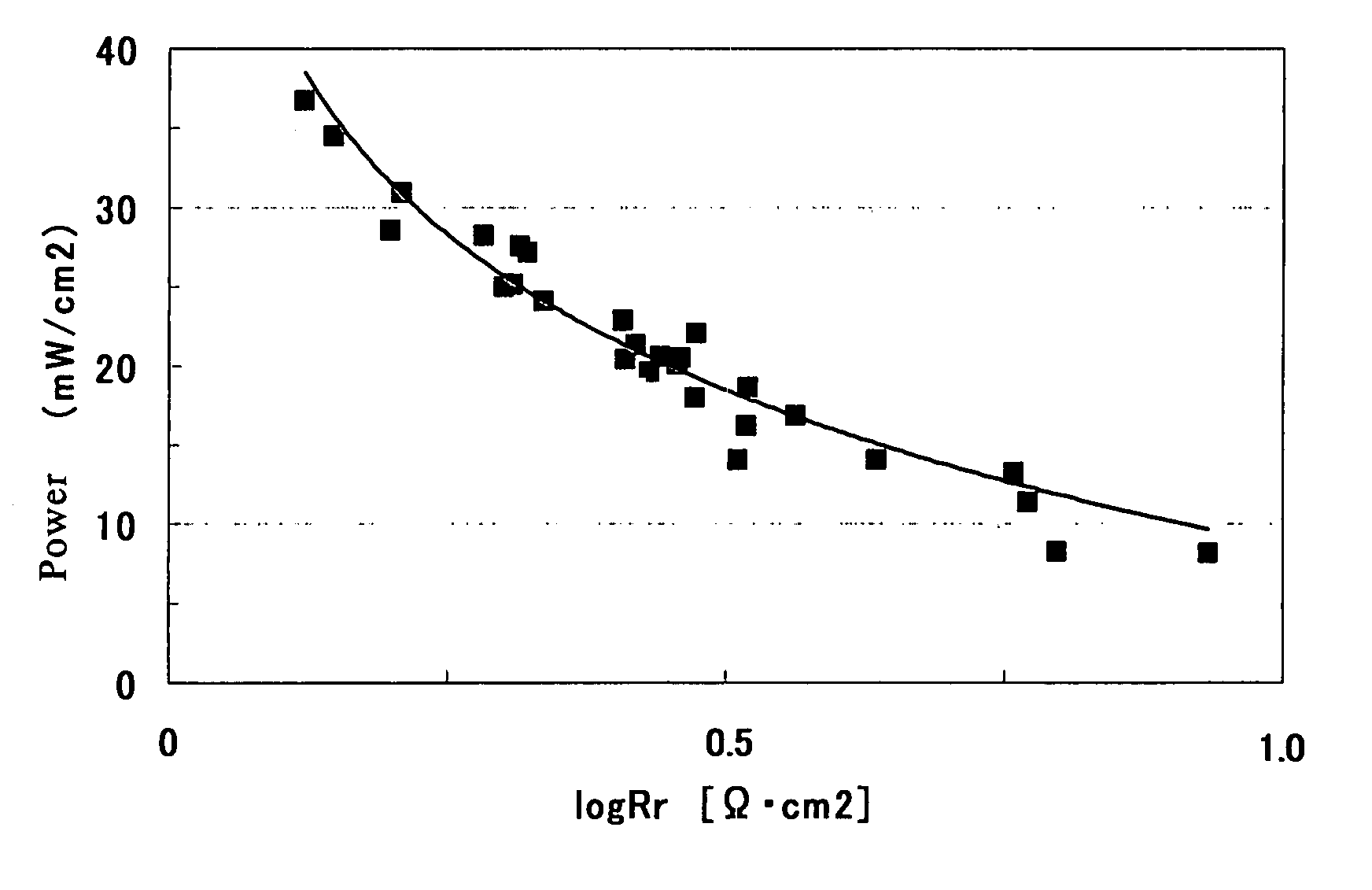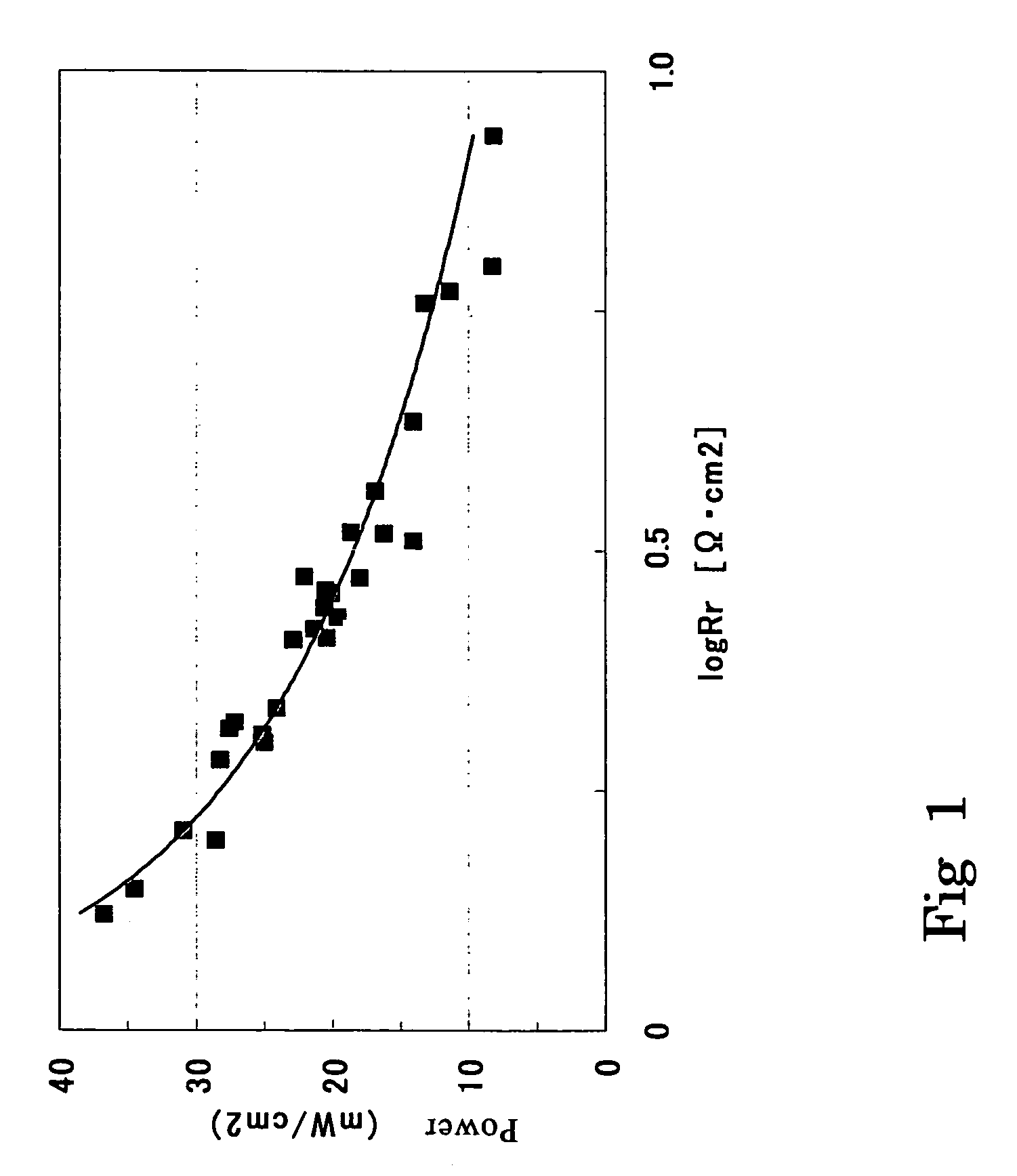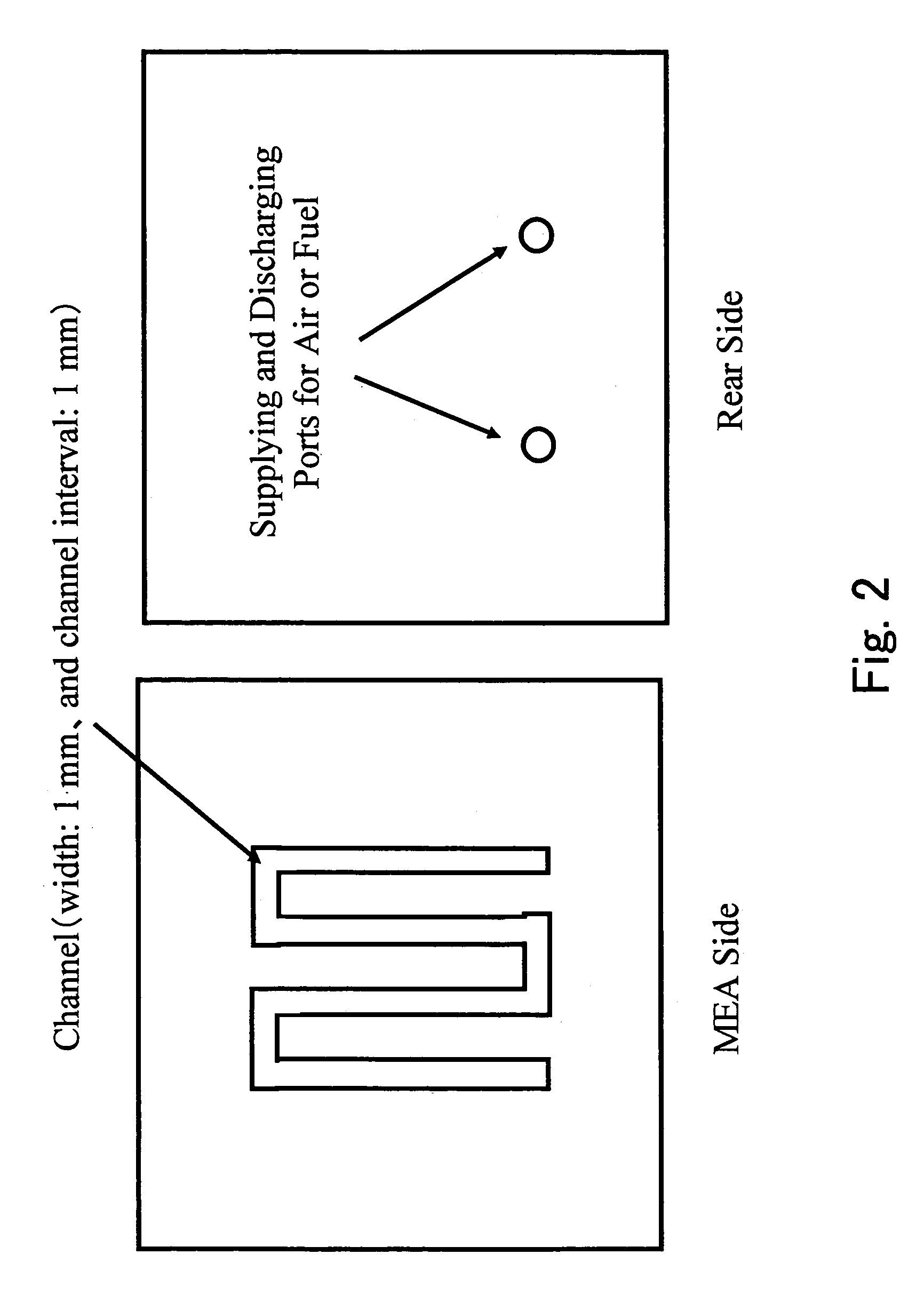Membrane electrode complex and solid type fuel cell using it
a fuel cell and membrane technology, applied in the direction of fuel cell details, cell components, electrochemical generators, etc., can solve the problems of low permeability rate of reaction materials such as fuel and air, unable to make low rr, and water generated at 20° c. is not easily volatilized, etc., to achieve the effect of reducing the performan
- Summary
- Abstract
- Description
- Claims
- Application Information
AI Technical Summary
Benefits of technology
Problems solved by technology
Method used
Image
Examples
example 1
(1) Production of an Anode and a Cathode
[0127]A carbon cloth made of carbon fiber woven cloth and manufactured by E-TEK in USA was treated with 20% PTFE. Specifically, the carbon cloth was immersed into a 20% by weight dispersion of polytetrafluoroethylene, which will be abbreviated to PTFE hereinafter, in water, pulled up therefrom, dried and fired. A carbon black dispersion containing 20% by weight of PTFE was applied onto one surface of the carbon cloth, and the resultant was fired to produce an electrode substrate. Onto this electrode substrate was applied an anode catalyst coating solution composed of Pt—Ru carried carbon catalysts “HiSPEC” (registered trademark) 7000 and “HiSPEC” (registered trademark), 6000 manufactured by Johnson & Matthey Co., a 20% solution of “Nafion” (registered trademark) manufactured by Du Pont Co, and n-propanol. The coating solution was then dried to produce an anode catalyst layer. The application of the anode catalyst coating solution was carried o...
example 2
[0133]In Example 1, the platinum amount in the anode catalyst layer was set to 1.0 mg / cm2. Moreover, the carbon amount, the platinum amount and the ion conductor amount in the cathode catalyst layer, the thickness thereof, and the ratio of the platinum amount to the ionic group amount were changed to conditions shown in Table 2-1. The same method as in Example 1 except these was performed to produce a membrane electrode assembly and evaluate it. The resultant evaluation results of the membrane electrode assembly are shown in Tables 1-1 and 2-1.
example 3
[0134]In Example 1, the platinum amount in the anode catalyst layer was set to 5.0 mg / cm2. Moreover, the carbon amount, the platinum amount and the ion conductor amount in the cathode catalyst layer, the thickness thereof, and the ratio of the platinum amount to the ionic group amount were changed to conditions shown in Table 2-1. The same method as in Example 1 except these was performed to produce a membrane electrode assembly and evaluate it. The resultant evaluation results of the membrane electrode assembly are shown in Tables 1-1 and 2-1.
PUM
| Property | Measurement | Unit |
|---|---|---|
| thickness | aaaaa | aaaaa |
| thickness | aaaaa | aaaaa |
| thickness | aaaaa | aaaaa |
Abstract
Description
Claims
Application Information
 Login to View More
Login to View More - R&D
- Intellectual Property
- Life Sciences
- Materials
- Tech Scout
- Unparalleled Data Quality
- Higher Quality Content
- 60% Fewer Hallucinations
Browse by: Latest US Patents, China's latest patents, Technical Efficacy Thesaurus, Application Domain, Technology Topic, Popular Technical Reports.
© 2025 PatSnap. All rights reserved.Legal|Privacy policy|Modern Slavery Act Transparency Statement|Sitemap|About US| Contact US: help@patsnap.com



